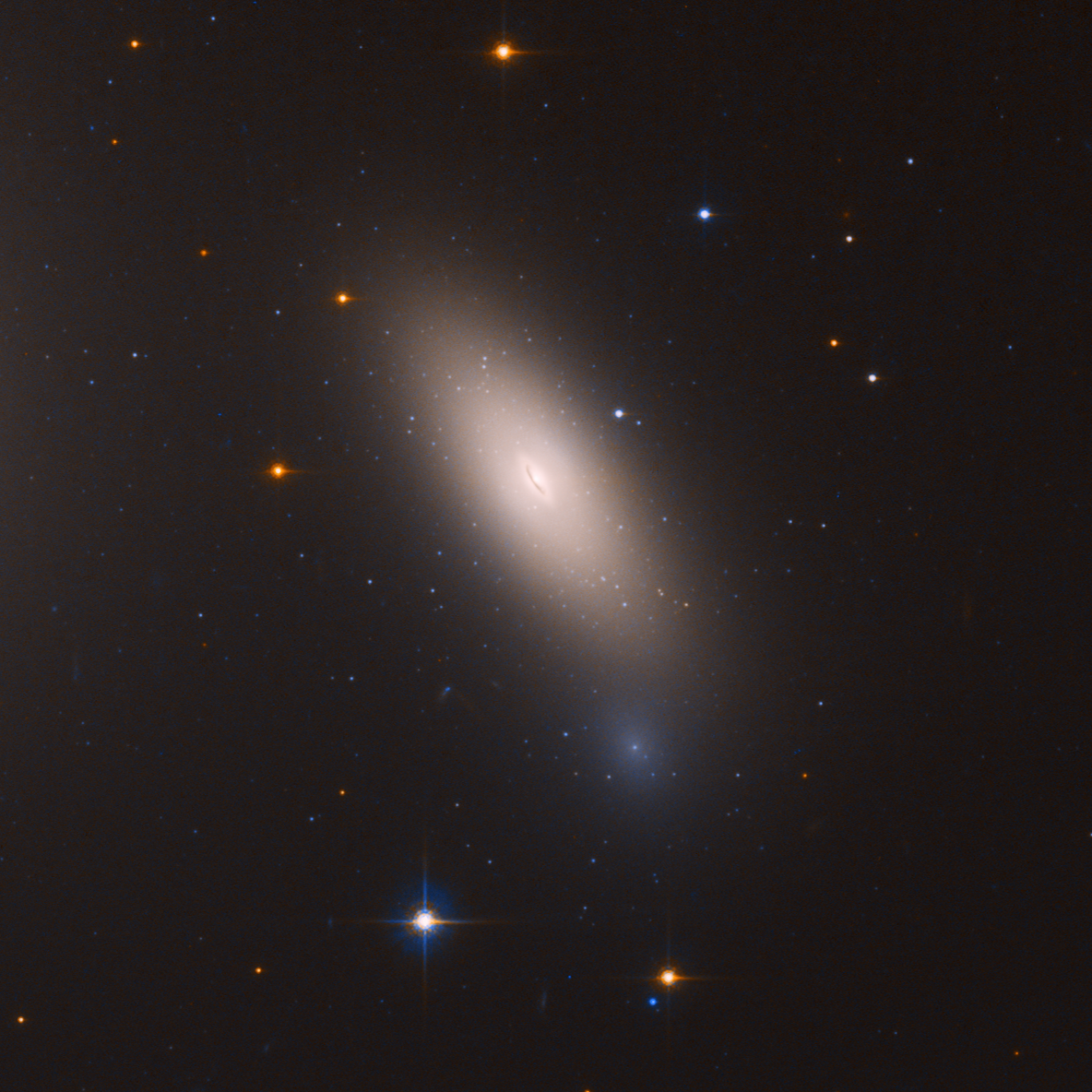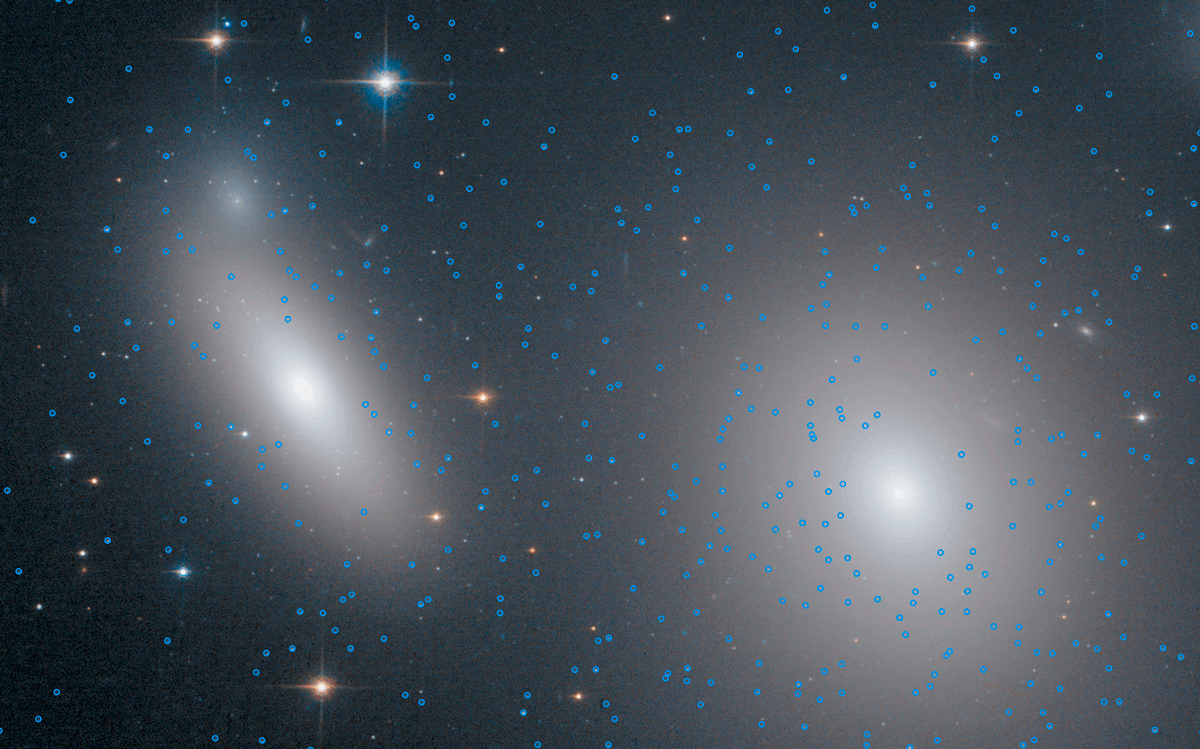
Astronomers have put NASA's Hubble Space Telescope on an Indiana Jones-type quest to uncover an ancient "relic galaxy" in our own cosmic backyard.
The very rare and odd assemblage of stars has remained essentially unchanged for the past 10 billion years. This wayward stellar island provides valuable new insights into the origin and evolution of galaxies billions of years ago.
The galaxy, NGC 1277, started its life with a bang long ago, ferociously churning out stars 1,000 times faster than seen in our own Milky Way today. But it abruptly went quiescent as the baby boomer stars aged and grew ever redder.
The findings are being published online in the March 12 issue of the science journal Nature.
NASA, ESA, and J. DePasquale (STScI)
Though Hubble has seen such "red and dead" galaxies in the early universe, one has never been conclusively found nearby. Where the early galaxies are so distant, they are just red dots in Hubble deep-sky images. NGC 1277 offers a unique opportunity to see one up close and personal. "We can explore such original galaxies in full detail and probe the conditions of the early universe," said Ignacio Trujillo, of the Instituto de Astrofisica de Canarias at the University of La Laguna, Spain.
The researchers learned that the relic galaxy has twice as many stars as our Milky Way, but physically it is as small as one quarter the size of our galaxy. Essentially, NGC 1277 is in a state of "arrested development." Perhaps like all galaxies it started out as a compact object but failed to accrete more material to grow in size to form a magnificent pinwheel-shaped galaxy.
Approximately one in 1,000 massive galaxies is expected to be a relic (or oddball) galaxy, like NGC 1277, researchers say. They were not surprised to find it, but simply consider that it was in the right place at the right time to evolve - or rather not evolve - the way it did.

The telltale sign of the galaxy's state lies in the ancient globular clusters of stars that swarm around it. Massive galaxies tend to have both metal-poor (appearing blue) and metal-rich (appearing red) globular clusters. The red clusters are believed to form as the galaxy forms, while the blue clusters are later brought in as smaller satellites are swallowed by the central galaxy. However, NGC 1277 is almost entirely lacking in blue globular clusters. "I've been studying globular clusters in galaxies for a long time, and this is the first time I've ever seen this," said Michael Beasley, also of the Instituto de Astrofisica de Canarias.
The red clusters are the strongest evidence that the galaxy went out of the star-making business long ago. However, the lack of blue clusters suggests that NGC 1277 never grew further by gobbling up surrounding galaxies.
By contrast, our Milky Way contains approximately 180 blue and red globular clusters. This is due partly to the fact that our Milky Way continues cannibalizing galaxies that swing too close by in our Local Group of a few dozen small galaxies.
It's a markedly different environment for NGC 1277. The galaxy lives near the center of the Perseus cluster of over 1,000 galaxies, located 240 million light-years away. But NGC 1277 is moving so fast through the cluster, at 2 million miles per hour, that it cannot merge with other galaxies to collect stars or pull in gas to fuel star formation. In addition, near the galaxy cluster center, intergalactic gas is so hot it cannot cool to condense and form stars.
The team started looking for "arrested development" galaxies in the Sloan Digital Sky Survey and found 50 candidate massive compact galaxies. Using a similar technique, but out of a different sample, NGC 1277 was identified as unique in that it has a central black hole that is much more massive than it should be for a galaxy of that size. This reinforces the scenario that the supermassive black hole and dense hub of the galaxy grew simultaneously, but the galaxy's stellar population stopped growing and expanding because it was starved of outside material.
"I didn't believe the ancient galaxy hypothesis initially, but finally I was surprised because it's not that common to find what you predict in astronomy," Beasley added. "Typically, the universe always comes up with more surprises that you can think about."
The team has 10 other candidate galaxies to look at with varying degrees of "arrested development."
The upcoming NASA James Webb Space Telescope (scheduled for launch in 2019) will allow astronomers to measure the motions of the globular clusters in NGC 1277. This will provide the first opportunity to measure how much dark matter the primordial galaxy contains.
The Hubble Space Telescope is a project of international cooperation between NASA and ESA (European Space Agency). NASA's Goddard Space Flight Center in Greenbelt, Maryland, manages the telescope. The Space Telescope Science Institute (STScI) in Baltimore, Maryland, conducts Hubble science operations. STScI is operated for NASA by the Association of Universities for Research in Astronomy, in Washington, D.C.


































